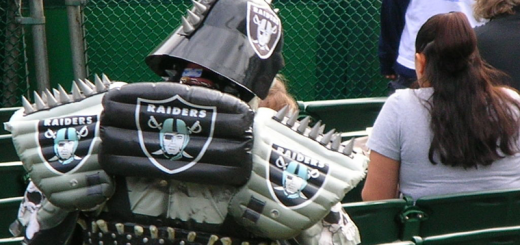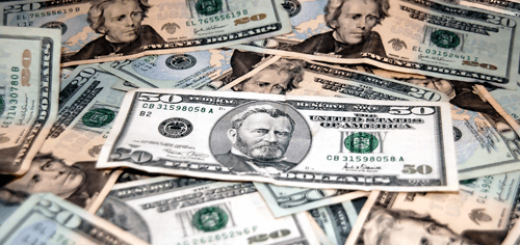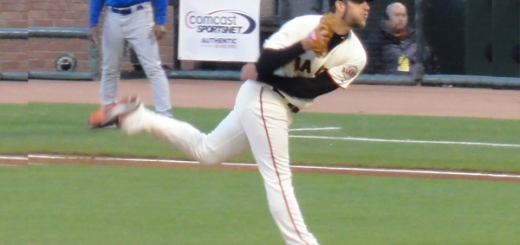Anatomy of a Fantasy Baseball Draft Pt. 2
In Part 1, we set up some of the circumstances for a typical fantasy baseball league, mostly focusing on the how and why teams do what they do. This how one draft night in one fantasy baseball league unfolded.
First was the minor league rookie draft. Having looked back at some past drafts, one can see that almost every key player in Major League Baseball today was at one time a person drafted in our rookie draft. Sure, there were a few players who made it to the majors and became stars without being high profile minor leaguers, but most everyone who is big time now was recognized by our league as players worth drafting as minor league prospects when they were younger.
Besides the previously mentioned Trout, Harper and Goldschmidt, you can also look back and see Clayton Kershaw, Kris Bryant, Albert Pujols, Gerritt Cole, Stephen Strasburg, Dustin Pedroia, Hanley Ramirez, Felix Hernandez, Chris Sale, Carlos Correia, Manny Machado, Joey Votto, Buster Posey and Andrew McCutcheon were ALL somebody’s draft picks in our league. What that means is that the savvy owner NEEDS to obtain quality players as rookies before they get well known.
Rookie Draft
So we drafted this year’s best available rookies. Many of the best minor league rookies are already on someone’s roster, so this is a draft of those that are still out there not taken. But there are always new and exciting prospects that start climbing the top prospects charts every spring.
While going down the entire list of picks would seem confusing to many out there who don’t follow such things very closely, I will instead name some names of some of the promising minor league rookies that were drafted on this night that will probably be some of the best players in baseball in the very near future. These are some of the best:
AJ Reed – 1B – Houston Astros
Alex Reyes – P – StL Cardinals
Blake Snell – P – Tampa Bay Rays
Victor Robles – OF – Wash Nationals
Wilsson Contreras – C – Chi Cubs
Bobby Bradley – OF – Phil Phillies
Kenta Maeda – P – LA Dodgers
Gleyber Torres – SS – Chi Cubs
Max Kepler – OF – Minn Twins
Anthony Alford – OF – Tor BlueJays
Yulieski Gurriel & Lourdes Gurriel – IF, and Lazaro Armenteros – OF – star prospects from Cuban baseball
Mark my words. You will probably see some of these players in an all star game within the next five years. Baseball replenishes its players through the minor league prospects pipeline. So does this league.
The Draft
What our league had in terms of teams and their status going into the draft was the following:
12 teams each had a total of $260 salary cap to use for their entire 24 man roster. Each team could keep a maximum of 14 “keeper” players from their previous year’s roster. Some teams, however, could bring up some minor league “rookie” call ups (if they were good enough), which could add to the potential 14 players on their roster going into the draft. This is important to some, because the less spots you have to fill, the more theoretical money you can have to use during the auction. That is even more important when you realize that some players during a crazy auction frenzy can often go for 50 to 60 dollars each.
The 12 teams had varying amounts of salary cap left, depending upon how much money they utilized to pay the “salaries” of their 14 keeper players. The “better” teams, presumably, would have had to pay more money to pay for their “better” players, while the lower division teams would have, again presumably, had less of a salary burden for their less successful teams (which would have had less productive and less expensive players). The defending champion team only had 53 dollars of salary cap to spend, while at least two teams had over 200 dollars of cap room.
The teams with only 53 dollars had fewer needs (he had retained most of his championship team, which included fantasy stalwarts Clayton Kershaw, Bryce Harper, Nolan Arenado and Dee Gordon), while the teams with the over $200 budgets had far less true quality players and thus far more glaring needs. My team, which finished in third place last season, had many good retained players (Paul Goldschmidt, Ryan Braun, Matt Carpenter,Prince Fielder, Chris Sale, Matt Harvey, to name a few) and thus only had 94 dollars of cap room to pay for ten players (my team did not have any called up rookies).
Here’s how it unfolded.
The first player thrown out in the auction was Aroldis Chapman, a “salary drain” type of player. Teams with less money often want the teams with the larger budgets to spend huge chunks of their salary cap to “drain” their resources on some of the better, more expensive players, since they who have the most money can easily outspend the guy who has the minimal budget for this draft. Chapman, the suspended Yankees reliever, went for (I think) 17 dollars. My team was going to have to watch and hope the others would spend away their salary cap advantage, while I had to still try to pick up the quality player needs I had to fulfill. I needed “value” players for the money I could spend.
Then came the inevitable wave of the expensive, premium players. Everybody wanted them. The people with the low salary cap budgets knew they couldn’t afford them. They just hoped they would be expensive, and that they would be spread out among all the teams (especially the lower division teams) so no one team would consolidate all of the good players and grow into a powerhouse. Outfielders Juan Bautista, Adam Jones and Andre McCutcheon all went for over $50. That was expected, as they were obviously the top tier of hitters that were available in this draft.
The same wave of expensive players saw the premium pitchers drawing HUGE interest and equally huge salary bids. Madison Bumgarner, Zack Greinke, Max Scherzer, King Felix Hernandez all went for over $50. By the way, it showed some “who you keep vs. who you obtain in the draft” strategy as Clayton Kershaw was “kept” from last year for $60, David Price was kept for $40, while Max Scherzer was drafted for $65, and King Felix went for $59. Luckily, I already had some premium pitchers, kept for a much more reasonable keeper price. All I could do is sit and wait the bidding madness out.
As everyone kept snatching up the players they wanted for prices I could not afford (mind you, I wanted several of these players too and bid on them up to a point, but they simply went flying past my budget), I could only wait to see if my wish list players that would hopefully be more affordable could be nabbed.
For my team for this draft, I needed a catcher, a shortstop, a second baseman, a MIF or another middle infielder (I chose to not keep any at those positions for strategic reasons), two outfielders, a designated hitter, and three pitchers as the ten players I would have to draft. Going in, I had excellent pitching (lots of wins and strikeouts), pretty good speed (runs scored and steals categories), some pretty good power (home runs and RBI’s). I needed to add more hitting across the board and get three pitchers that wouldn’t screw up my ERA and WHIP (a fantasy category – pitchers that don’t give up a lot of walks) and could supplement the rest of my starters.
As all of the teams kept grabbing “their” desired players, I had kept my eyes on some players and waited for possible openings to get some value (good players at a bargain price). Finally, there was an opening. I had valued catcher Derek Norris of the Padres as a decent catcher at anything less than ten dollars (catchers were in demand this draft). I luckily got him for nine. Other catchers had been going for between 12 and 20, so this was a good start.
Another player came out that I really hadn’t been thinking could be had for the budget I was thinking of. Mark Teixiera, the DH of the Yankees, came out, and I had bid only three dollars (for this player with 30+ home run pop), expecting to go as high as maybe ten bucks, and low and behold, I was able to get him for THREE bucks. A few years ago, HE was one of those 50+ dollar hitters. He still has that great home run stroke and he still plays in that friendly hitter’s ballpark known as Yankee Stadium.
Don’t ask how and don’t ask why, but two more players that I picked up also happened to be Yankees. I don’t particularly like the Yankees, but outfielder Jacoby Ellsbury for $22 and shortstop Starlin Castro for $16 seemed like pretty darn good pickups and they were within my budget. The American League traditionally has players that score more fantasy points for hitting than the National due to the DH, and the Yankees should be one of the better run scoring teams in that league, so these picks COULD turn out to be pretty good. Time will tell. Like I said earlier, I don’t really like the Yankees, but I WILL be rooting for these players this year. Such is the life of a fantasy baseball fan.
Another similar “value” pick up in the hitting category for the outfield was Hanley Ramirez of the Boston Red Sox for 12 bucks. He was picked for the same reasons as the Yankee hitters, as he plays in a good hitting division in the American League, but it was also a pick based on draft day instincts. Hanley was not thought of as a likely target prior to the draft. Hanley gets hurt a lot, but he also can flat out hit. Time (and injuries) will tell on this pick.
Another pick was 2nd Baseman D.J. LeMahieu of the Colorado Rockies for 22 bucks. Call it the Colorado Rockies effect, but players that play half their games there often put up some pretty good offensive statistics just because they play for that team. Probably overpaid for him at $22, but who knows how he will hit this year? Hopefully as good as he did last year. Oh, I guess the main reason I got him is that he is projected to steal around 30 bases this year, and maybe the altitude in Colorado will help him hit .300 again.
So, I had drafted a catcher, a designated hitter, two outfielders and two of my three middle infielders and blown most of my budget. At this time of a draft, you pretty much have to wait until the rest of the players blow their budget also and hope to pick up some end of the draft gems that had been neglected. There always seem to be some good players that fall into this category at the end of the draft that WOULD have gone for higher had they been thrown out there for the auction when more people had more money, but they were not.
So, near the end of the draft, I was able to obtain pitchers Gio Gonzales of the Washington Nationals for $2, Ervin Santana of the Minnesota Twins for $1, 2nd baseman Neil Walker of the Mets for $1 and I went for a gamble (to keep the budget down) by picking injured Mets pitcher Zack Wheeler for a buck also. Wheeler can be stashed on the Disabled List until he gets healthy and another replacement can be picked off of the waiver wire to either stay on the pitching staff until Wheeler returns, or, if the replacement is good enough, he can stay on the staff indefinitely and I would just cut Wheeler when he gets healthy.
And so, my team had been drafted. Ten roster spots had been filled out. $89 had been spent on these ten players. Earlier in the draft, $89 could not even have got you TWO players, but by sticking to a budget, and trying to get value for the money, I was able to obtain ten players that I think will help this team and produce some good fantasy numbers.
A fantasy draft is a crazy, competitive way to spend a couple of hours of your life. But you get to see this same group of fellow competitors again (many league members have been in the league 25+ years, I’ve been in the league a dozen) and it all seems worthwhile. You get to be a freaking General Manager of your own baseball team again.
The regular season starts today. Besides my home town team, I will be rooting for about 24 players from a whole bunch of other teams. MY players!




